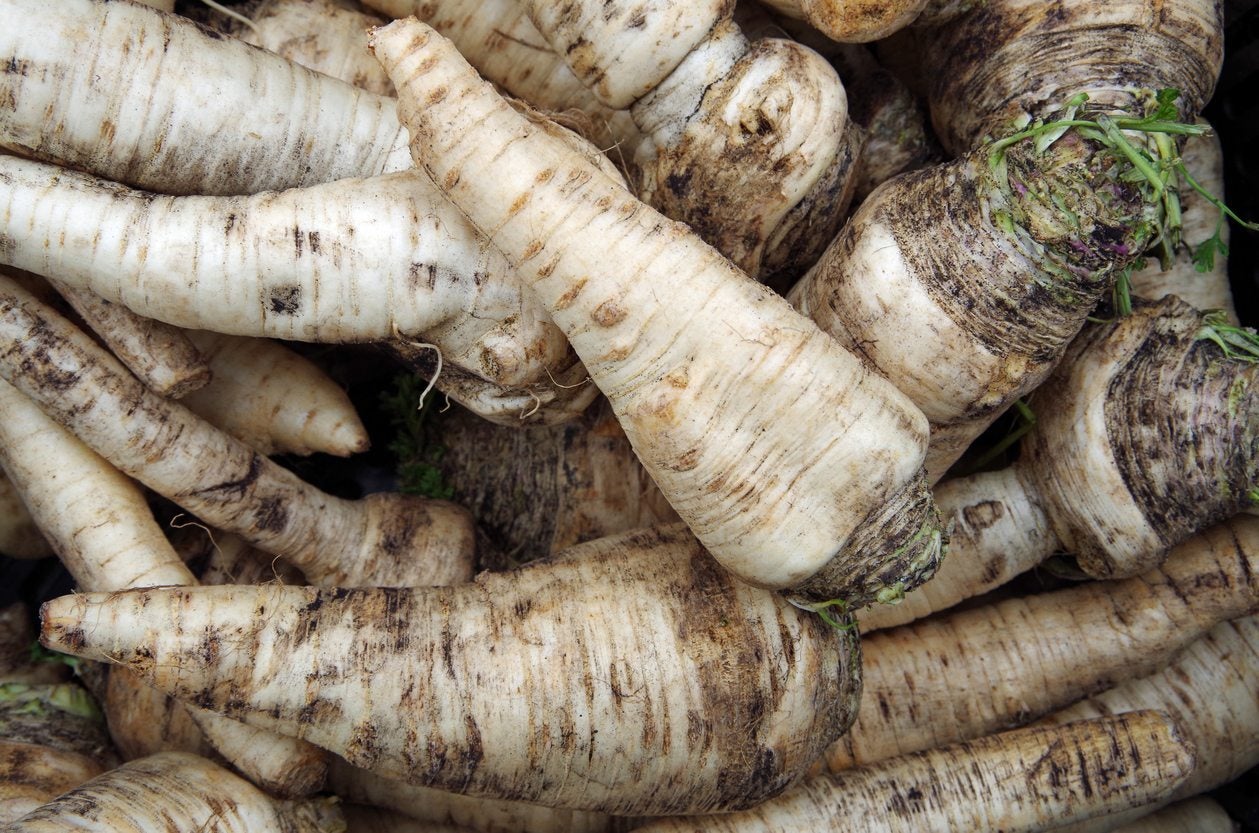Harvesting Parsnips In Winter: How To Grow A Winter Parsnip Crop


In springtime when store shelves fill up with seed displays, many gardeners are tempted to try new vegetables in the garden. A commonly grown root vegetable throughout Europe, many North American gardeners have tried planting a row of parsnip seeds in spring with disappointing results-- such as tough, flavorless roots. Parsnips have a reputation as being difficult to grow, mostly because gardeners plant them at the wrong time. An ideal time for many regions is winter.
Growing Parsnips in Winter Gardens
Parsnip is a cool season root vegetable that is technically a biennial but is usually grown as a winter annual. They grow well in full sun to part shade in any rich, fertile, loose, well-draining soil. However, parsnips do have a hard time growing in the hot, arid conditions like those found in southern regions of the U.S. They can also be heavy feeders and distorted or stunted roots may form if there are not enough available nutrients in the soil. Experienced parsnip growers will tell you that parsnips taste the best only after they have experienced some frost. For this reason, many gardeners only grow a winter parsnip crop. Freezing temperatures cause the starches in parsnip roots to turn into sugar, resulting in a carrot-like root vegetable with a naturally sweet, nutty flavor.
How to Time a Winter Parsnip Harvest
For a flavorful winter parsnip harvest, plants should be allowed to experience at least two weeks of steady temperatures between 32 and 40 degrees F. (0-4 C.). Parsnips are harvested in late autumn or early winter, after their aerial foliage has wilted from frost. Gardeners can harvest all the parsnips to store, or they can be left in the ground to be harvested as needed throughout winter. From seed, parsnips can take 105 to 130 days to reach maturity. When planted in spring, they reach maturity in the heat of late summer and do not develop their sweet flavor. Seeds are usually planted instead in mid to late summer for harvesting parsnips in winter. Plants are then fertilized in fall and mulched thickly with straw or compost before frost. Seeds can also be planted in mid to late autumn to grow in the garden throughout winter and harvested in early spring. When planted for a spring harvest, however, roots should be harvested in early spring before temperatures rise too high.
Sign up for the Gardening Know How newsletter today and receive a free copy of our e-book "How to Grow Delicious Tomatoes".

Darcy is a former contributor to Gardening Know How. She is a professional landscape designer and gardening writer with experience in plant sales. An avid gardener, Darcy has a passion for sharing practical tips to help others grow.